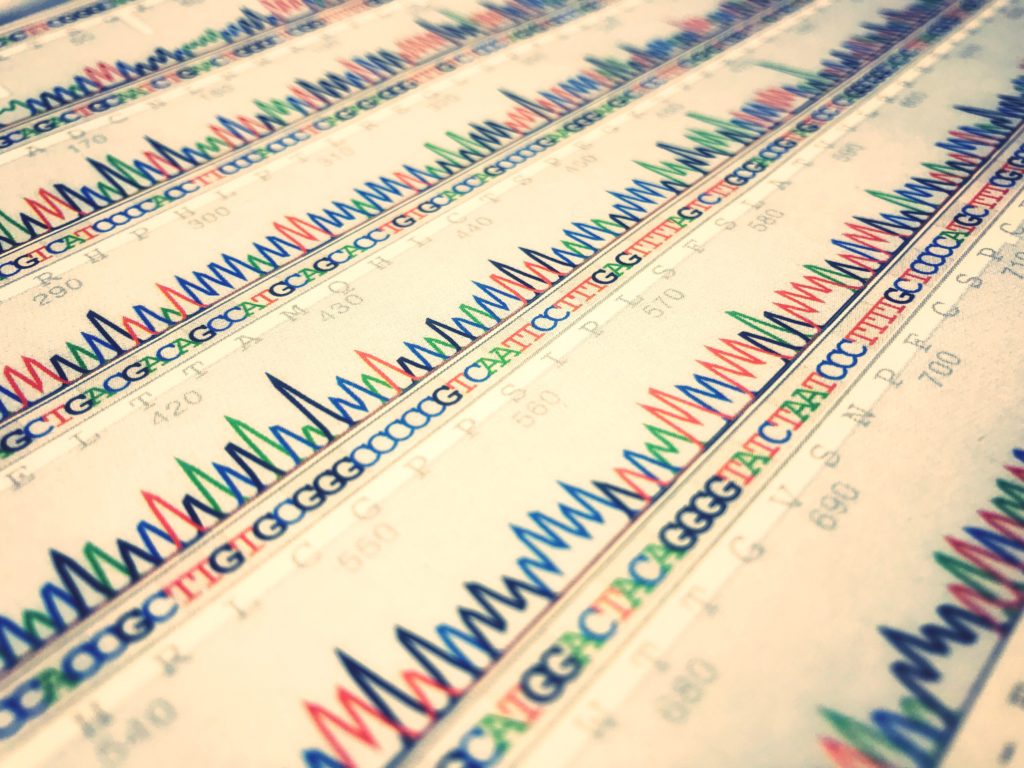Bioinformaticians use a combination of mathematics, computer science and biology to help scientists make sense of the data gathered from research projects. Bioinformatics jobs are commonly found in the fields of computer information science, pharmaceuticals, biotechnology, medical technology, computational biology, proteomics and medical informatics.
The Human Genome Project could not have succeeded without the use of bioinformatics. Since the conclusion of the project in 2003, bioinformatics tools have been used to identify genes and elucidate their function with the aim of developing gene-based strategies for disease prevention, diagnosis and treatment.
Since the function of almost half of all genes identified in the project are currently unknown, there is a lot of opportunity in the field, and bioinformatics jobs are in demand.
The minimum requirement to become a professional in the bioinformatics field includes having a bachelor’s and master’s degree in bioinformatics, computer engineering, computational biology, computer science, or related field.
Some employers may also prefer if candidates have PhD degrees because this provides a higher level of expertise.
Wondering which bioinformatics job is right for you? Read on to learn about job titles within bioinformatics — like bioinformatics analyst, bioinformatics scientist, bioinformatics technician, bioinformatics engineer and director of bioinformatics — including job descriptions, average annual salaries and the level of experience required to land the role.
To start applying to bioinformatics jobs now, check out the Xtalks Job Search to find a job that best suits you.
Bioinformatics Analyst
Job Description
Being a bioinformatics analyst means analyzing scientific data, developing treatment plans, and monitoring the algorithms for accuracy. With medical professionals’ and researchers’ help, bioinformatics analysts can aid in writing reports and discussing results.
This job’s responsibilities entail working with large databases to research the pathology of diseases and develop algorithms to help find treatments. The findings gathered are then documented and presented to a larger audience, whether to scientists in the lab or at conferences.
Specific skills are required to succeed in this job; these include advanced writing skills for scientific literature, developing software tools, working on genome sequencing projects, and designing DNA sequencing libraries.
How to Become a Bioinformatics Analyst
To become a bioinformatics analyst, one must obtain a bachelor’s degree in biology, chemistry, biostatistics, or a related field. Additionally, many employers prefer having an employee with a solid educational background, including having a master’s or PhD degree. Having a strong background in biochemistry or genetics is necessary for the problem-solving element of the job. Statistics experience is essential because it provides analysts with the knowledge needed to excel in the job.
Furthermore, the necessary knowledge and understanding of research requirements, regulations and protocols to comply with all federal rules is an asset. Verbal, written and communication skills are also vital for success.
Bioinformatics Analyst Salary
The average salary for a US-based bioinformatics analyst is $107,292 per year, with $52 as a standard hourly rate.
Bioinformatics Scientist
Job Description
Bioinformatics scientists also work in the field of computational biology, which combines science, mathematics, engineering and statistics to understand biological information.
This job entails combining scientific information with computational information from databases to make sense of big data. This job furthers the field of biomedical research and supports drug development.
As part of the job, bioinformatics scientists are required to make changes to tools that they may need to update in order to fit the needs of the projects they are working on. This helps them use the technology to find solutions to problems in their specific area of biology.
How to Become a Bioinformatics Scientist
A minimum requirement to becoming a bioinformatics scientist includes obtaining a master’s degree in bioinformatics, computational biology, or genomics. Experience in the field, such as working as a research assistant, would help advance your application and ability to become a bioinformatics scientist.
Bioinformatics Scientist Salary
In the US, the average salary for a bioinformatics scientist is $82,000, but the wages usually start at $48,000 and go up to $133,000.
Bioinformatics Technician
Job Description
Bioinformatics technicians gather, analyze, and track biological data using computer programs. They use tools to interpret molecular data and can then build and maintain databases for biological information.
This job requires the technicians to analyze bioinformatics data using software, statistical applications and data mining techniques. Bioinformatics technicians take the information gathered and relay it to researchers to determine the next steps. This research is then implemented, designed and developed using web-based tools and machine learning algorithms for large-scale biological databases.
How to Become a Bioinformatics Technician
To become a bioinformatics technician, one must obtain a bachelor’s degree and employers will most likely look for a master’s degree in a related field. Additionally, this is a competitive space, where skill, knowledge and four to six years of experience are required.
Experience in mathematics, computers, biology, and design are among the specific skills that would make an applicant excel in the bioinformatics technician space. More specifically, knowledge of design techniques, tools and principles needed to create technical plans, blueprints and models is important.
Bioinformatics Technician Salary
An average salary for a bioinformatics technician is $75,000 per year and $36 per hour in the US. The upper percentile could earn up to $141,000 annually depending on the skill level, location and years of experience.
Bioinformatics Engineer
Job Description
A bioinformatics engineer is in charge of research procedures and uses various analysis methods to study biological data, such as genetic and amino acid sequences. In other words, they write the software tools using statistical sciences and computational skills that analysts and scientists use.
In this job, responsibilities include developing methodologies and hypotheses within the medical informatics, computational biology and medical technology fields. Thus, they may improve algorithms to study genomic data better, build databases to secure biological information, and improve the next-generation sequencing pipeline.
How to Become a Bioinformatics Engineer
To succeed as a bioinformatics engineer, the applicant must have a bachelor’s and master’s degree in computer science, bioinformatics, biology, or a related field that could give them an understanding of how to develop the tools used to advance genomic studies. Some employers in this competitive realm will look for applicants with a PhD who specializes in the area.
The engineer should understand programming languages such as Python, C++, Perl and Java, along with having the ability to develop and design databases for biological data.
Problem-solving, communication and analytical skills are also essential requirements.
Bioinformatics Engineer Salary
The average salary for a bioinformatics engineer in the US is $87,000 per year. The top 10 percent make over $127,000 annually and the lowest wages start at $60,000.
Director of Bioinformatics
Job Description
The director of bioinformatics has various responsibilities that do not require them to delve into a specific project, but rather manage and direct the duties and developments on a given project. They provide scientific leadership on multiple projects and support their bioinformatics teams.
Additionally, the director oversees data analysis and algorithms, creates relationships with key partners and provides opportunities to develop skills and provides feedback to achieve the project’s goals.
How to Become a Director of Bioinformatics
This senior-level job requires a minimum of 12 years of experience, which includes five years in a leadership role.
Having a bachelor’s, master’s and preferably a PhD in bioinformatics, genomics, computer science or equivalent qualification in these fields is an asset. Additionally, it is important to have a good understanding of next-generation sequencing and genomic technologies.
Knowing at least one programming language such as Python, R, Go or C++ and proficiency in the Linux environment is a requirement.
A director must have exceptional communication and leadership skills with the ability to collaborate and build relationships.
Director of Bioinformatics Salary
The average salary in the US for a director of bioinformatics is $160,00 a year. The range starts at $128,000 and goes up to around $192,000 annually.
Bioinformatics, unlike other life science-related job paths, is a hybrid between computer studies and science. This hybrid field involves applying mathematics and designing algorithms to gather the data from scientists and make sense of it on a large scale.
The emergence of big data has made bioinformatics a crucial and competitive field of work. It relies heavily on gathering data, sharing that information and designing tools specifically for that research.
As companies leverage technologies, bioinformatic jobs are growing in demand. According to IBM, 2.5 terabytes of data are made every day and in the past two years, 90 percent of all data that has ever existed was generated.
With this in mind, now is a great time to start your career or find your next bioinformatics job by exploring current openings on Xtalks Job Search.












Join or login to leave a comment
JOIN LOGIN